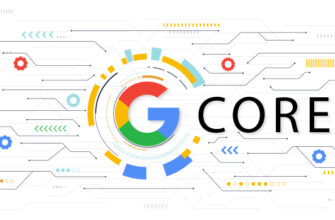When Google introduced AI-driven summaries across search results a year ago, the web shifted in ways both subtle and seismic. AI Overviews from Google — one year on. How search has changed during this time is a question publishers, SEO teams, and everyday searchers have been asking as traffic patterns and user expectations evolved.
- What Google launched and how it works
- How user behavior shifted
- Voice and conversational queries
- Effects on publishers and SEO
- How the signal mix changed
- Quality, trust, and misinformation
- Personal experience: a year of watching traffic and tone
- Practical steps for creators and marketers
- Measuring success: new KPIs to watch
- Regulatory and ethical pressures
- What to watch next
What Google launched and how it works

Google’s rollout centered on concise AI-generated summaries that appear at the top of some search results, synthesizing information from multiple sources. These overviews aim to answer intent quickly, offering a synthesized response rather than a list of links that users must parse on their own.
Under the hood, the system combines retrieval of relevant documents with large-language-model reasoning to craft a short, readable overview. The model cites or links back to underlying sources in many cases, but the balance between synthesis and source visibility has been an ongoing area of refinement.
Google has iterated on how and when these overviews appear, adjusting factors like query types, source diversity, and flags for ambiguous or novel subjects. The company also experimented with user controls and feedback loops so searchers can rate or request more context when an overview feels incomplete.
How user behavior shifted
Searchers began to expect instant, conversational answers for queries that previously demanded skimming multiple pages. For straightforward information — definitions, timelines, quick comparisons — many users now accept the overview as the primary answer rather than clicking through to a long article.
That changed the funnel. Click-through rates for the top organic link dipped in some verticals while engagement with cited sources in the overviews rose for queries requiring deeper reading. In other words, the path from query to final content became shorter for some users, longer for others who wanted verification.
Search patterns also diversified: more follow-up, clarifying queries and more conversational phrasing emerged as people learned the best prompts to get useful summaries. Voice search benefited disproportionately from these changes, as spoken interactions mirror the summary-first experience the AI provides.
Voice and conversational queries
Conversational queries accelerated. People who talk to devices expect a tidy spoken answer, and AI overviews often provide exactly that, stripping away the need to read a full page. As someone who tests voice flows regularly, I noticed that devices returned correct high-level answers more often than they did a year ago.
However, edge cases remain. When context is nuanced or when the correct answer depends on interpretation, AI summaries can produce confident but incomplete responses, prompting users to dig further, often with follow-up questions that mirror natural conversation.
Effects on publishers and SEO
Publishers felt the impact swiftly: traffic that once arrived via organic clicks sometimes stayed with the search page. Sites that relied heavily on informational pages saw the largest shifts, particularly when content was straightforward to summarize. That forced many creators to rethink content structure and the value proposition of full articles.
At the same time, pages that offered unique value — proprietary data, original reporting, multimedia, or deep analysis — retained or even gained relative importance. The presence of an AI overview often drove a different kind of visit: readers seeking verification or depth, not quick facts.
SEO strategies adapted. Headline-first optimization gave way to layered content: quick, authoritative answers near the top for the model to surface, and richer, proprietary sections below to capture engaged readers. Structured data, clear sourcing, and transparent authorship became more prominent parts of the playbook.
How the signal mix changed

Ranking signals didn’t disappear, but their effective roles shifted. Historically, on-page relevance and inbound links dominated. Over the past year, clarity, trustworthy sourcing, and content that resists trivial summarization surfaced as differentiators. AI systems reward nuance differently than humans do when judging a page’s authority.
Google’s models also leaned on metadata and structured markup more heavily to understand page purpose and provenance. Sites that adopted clear schema, author bios, and transparent update logs made it easier for systems to attribute credibility and thus to include them in overviews or as cited sources.
Technical health remained essential: crawlability, load time, and mobile experience kept their importance, but they were now part of a broader mosaic where content differentiation and trust signals could move the needle more than raw link volume.
Quality, trust, and misinformation
One predictable tension rose to the surface: synthesis can inadvertently amplify errors. When an overview blends small inaccuracies from multiple sources, the result can be plausible-sounding but wrong, and those mistakes reach users faster than before. That heightened the need for better source attribution and correction mechanisms.
Google responded with iterative fixes: clearer citations within overviews, visible flags for uncertain topics, and pathways for users and publishers to report inaccuracies. These steps reduced the frequency of major errors, but the underlying challenge of model hallucination remains an industry-wide problem.
For publishers, the lesson was pragmatic: be easy to verify. Include citations, timestamps, and clear statements of scope. When a model can confidently tie its summary back to named sources and a publication date, readers — and the system — find it easier to trust the result.
Personal experience: a year of watching traffic and tone
As a writer and editor who has tracked several niche sites through this transition, I observed tangible differences in engagement. Pages optimized for deep explanation and original insight held steady, while thin “quick answer” pieces saw the most decline in direct clicks. The overall time users spent on my longer pieces sometimes increased because the people who clicked were more intent-driven.
In one case, I rewrote a popular how-to post to front-load a concise, verifiable summary and followed it with richer case studies and downloadable examples. Afterward, the page began to show up as a cited source in overviews for related queries and regained a healthy click-through rate. That real-world change underscores the value of blending quick answers with unique depth.
Publishers who experimented gained advantages. Small editorial changes — adding a clear summary paragraph, a short “why this matters” section, and direct citations — often resulted in better representation in AI-driven features without sacrificing the long-form readership that sustains subscriptions and ad revenue.
Practical steps for creators and marketers
Responding to this new landscape doesn’t require rewriting the rules of journalism or marketing. It calls for focused adjustments that respect both human readers and AI systems. Below are tactical, immediately actionable steps to consider.
- Write a concise, accurate summary at the top of each informational page to help systems extract the right snippet.
- Use clear citations, timestamps, and author attributions so summaries can be traced back to authoritative sources.
- Layer content: short answers for quick needs, followed by deep dives and exclusive material for engaged readers.
- Adopt structured data (schema.org) for articles, FAQs, and multimedia to make provenance explicit.
- Monitor query-level performance and adapt headings and internal anchors to serve both model and reader intent.
Applying these tactics across a site takes effort but is often more efficient than chasing single ranking tricks. The goal is to be reliably useful at both the summary and the deep-dive levels.
Measuring success: new KPIs to watch
Traditional metrics like organic sessions remain important, but they tell an incomplete story. We now weigh engagement metrics that reflect depth: scroll reach, time on page for readers who click through, conversion rates for users coming from cited overviews, and repeat visits driven by value rather than quick facts.
Another useful measure is “Cited source traffic” — how often a page appears as a source within an AI-generated overview and the behavior of users who follow those citations. Tracking this helps separate casual summary users from readers who seek original context and value.
Regulatory and ethical pressures
As AI summaries grew prominent, lawmakers and industry groups increased scrutiny on transparency and liability. There’s a sharper focus on attribution, fair use, and the responsibilities platforms carry when they synthesize others’ work. These conversations are shaping product design and publisher expectations.
For creators, these developments are a reminder to document sourcing and permissions rigorously. Attribution isn’t just a courtesy; it’s becoming a practical safeguard against disputes and a requirement in some policy contexts.
What to watch next
Expect refinement more than revolution. Over the next year, models will get better at flagging uncertain claims, offering alternative viewpoints, and routing users to original sources when nuance matters. Those incremental improvements will significantly affect how often summaries are trusted without verification.
We’ll also see product features that empower users to control the balance between synthesis and source visibility, such as toggles for “show more sources” or “view full article first.” These options will help reconcile the need for speed with the need for depth.
For publishers, success will hinge on making content both easily summarized and richly original. Those two traits once felt in tension; they’re now complementary strengths that determine visibility and value in the AI-augmented search era.
If you want to explore further perspectives, case studies, and tactical guides, visit https://news-ads.com/ and read other materials from our website.







